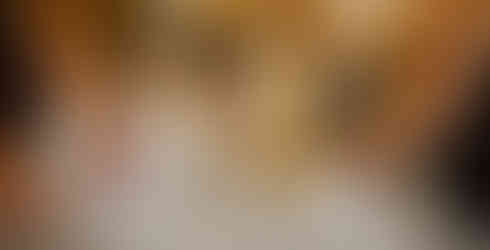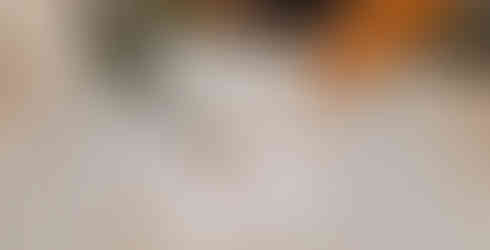How To Tie Dye!
- Chelsea Lake

- Nov 13, 2025
- 5 min read
One of our absolute favourite and most popular summer camp activities is Tie Dye. We do it every year, and have incredible results. We’ve made the process as simple as possible, and we’d love to share the secrets of our success with you to Tie Dye at school, at camp, at home, or wherever you like.

The biggest secret to tie-dyeing is having the right supplies, and getting high quality products. Here in British Columbia, we buy our materials at Maiwa on Granville Island, but you can order from their Supply Store online.
What You Need:
100% Cotton Pre-washed clothing or fabric
Table Salt
Elastic Bands - a variety of sizes is helpful
Plastic Bags
Disposable Gloves (latex/vinyl etc)
Equipment:
Containers or tubs to mix your dyes
Squeeze bottles - at least one for every colour of dye - more if you’re working with a large group
Large tubs for soaking clothing or fabric
Washing machine and dryer
Mixing the Dyes:
At The YES Camp we mix 6 colours of dye to use with approximately 50-70 people each week for 6 weeks over the course of the summer.
We like to mix the following colours: Turquoise, Golden Yellow, Green, Fuchsia, Orange and Purple.
We can mix these six colours using four Procion MX Powders: Turquoise, Golden Yellow, Yellow, Fuchsia - Each of these cost just $8 or $9 in their smallest quantities. Maiwa provides a great guide for dye mixing which you can find here.
Here’s what we would suggest depending on the size of your group – remember, the more colours you mix the more clothing you can dye. We are a little less precise and fussy than Maiwa’s guide, but we’ve found that our method works great and we can keep the dyes in sealed containers for a couple of weeks with good results.
Colour | A Few Items of Clothing | A Small Party of People | What We Mix for 100+ Shirts |
Turquoise | 1-2 heaping teaspoons turquoise | 3-4 heaping teaspoons turquoise | 6-7 heaping teaspoons turquoise |
Gold Yellow | 1-2 heaping teaspoons gold yellow | 3-4 heaping teaspoons gold yellow | 6-7 heaping teaspoons gold yellow |
Fuchsia | 1-2 heaping teaspoons fuchsia | 3-4 heaping teaspoons fuchsia | 6-7 heaping teaspoons fuchsia |
Green | 1 teaspoon turquoise, 1 heaping teaspoon yellow | 1 heaping teaspoon turquoise, 2 teaspoons yellow | 3 heaping teaspoons turquoise, 4 heaping teaspoons yellow |
Orange | 1 teaspoon fuchsia, 1 heaping teaspoon yellow | 1 heaping teaspoon fuchsia, 2 teaspoons yellow | 3 heaping teaspoons fuchsia, 4 heaping teaspoons yellow |
Purple | 1 teaspoon turquoise, 1 heaping teaspoon fuschia | 1 heaping teaspoon turquoise, 2 teaspoons fuchsia | 3 heaping teaspoon turquoise, 4 heaping teaspoons fuchsia |
| | | |
Add Salt | 2 heaping teaspoons | 3-4 heaping teaspoons | 6 heaping teaspoons |
Add Urea | 2 heaping teaspoons | 3-4 heaping teaspoons | 6 heaping teaspoons |
Hot Water | 2 cups boiling water - mix until dyes are fully dissolved | 4 cups boiling water - mix until dyes are fully dissolved | Add a full kettle of boiled water - mix until dyes are fully dissolved |
Ok, so you’ve got your dyes ready in tubs or squeeze bottles, and you’re ready to go.
Take those pre-washed shirts (you want to make sure any starches from new shirts are washed out) and soak those shirts in a big tub of Soda Ash mixed with water. We use about 2 cups of soda ash for 30-40 shirts. So, if you’re just doing a few clothing items use ½ cup of soda ash, mixed with a kettle of hot water and make sure the clothing is wet all the way through. If not, add some more water. It’s good to give this a mix after a little while to make sure all the fabric is absorbing the soda ash, but it doesn’t need to soak for an extended period of time.
When you’re ready to dye your clothes, squeeze out as much liquid as possible.This is really important, because the less liquid is in your fabric, the more the dye will be able to permeate. This is one of your major secrets to success.
So once it is wrung out really well (make sure to help the little ones if you’re doing this with kids), you’re going to find a clean surface to begin to fold and tie your fabrics. We’re going to share three methods that we teach teens:
The Spiral
Bulls-eyes
Horizontal and Vertical Stripes
Check out this YouTube Video to see a demo of how to fold these basic patterns, and a few others!

Once you’ve chosen a pattern, and made sure to tightly elastic your design, it’s time to dye your fabric. We do this outside, but you can do it in any easy to clean part of your house. It’s helpful to put down a plastic tarp or tablecloth if you think it might be a messy affair, and we don’t recommend wearing your favourite light coloured clothing for this activity.
Choose your colours! It’s important to think about what colours go next to each other, since they will bleed into each other. Complimentary colours like Red-Green, Blue-Orange and Yellow-Purple, (AKA Christmas, Blorange and Yurple) when combined will make a swampy green or brown, and might not be what you’re looking for.
The good news is that beyond the colour warning above, it’s pretty hard to mess up this part. No matter how you place your colours, you’re going to get some awesome results.

Using the squeeze bottles, over some plastic tubs, or a sink, fill in the sections of your spiral, bullseye or stripe pattern with different colours. You might want to limit yourself to two or three, or experiment with all of them. Use your gloved hand to squeeze the dye into the fabric and make sure it’s being absorbed. The less dye you use, and the tighter your elastics are, the more division and white areas you’ll have on your fabric.
Once you’ve dyed your whole piece, place it in a plastic bag and twist tie or tie the bag so that you can leave it for 24 hours. (Pro-tip - we once had to tie dye at super speed for a school program, and to speed up the process you can use a microwave! If you're in a rush, microwave your dyed fabric for a couple of minutes to activate the dyes, and get things moving).
After 24 hours, you’ll need to rinse out your piece. Removing the elastics, run your fabric under cold water, squeezing out the dye until the water runs clear. Once you’ve done this with all of your pieces, get them into a washing machine as soon as possible and run them through a regular cotton cycle with soap. Then dry them in a nice hot dryer to help the dye set. Once they come out they’re good to go! As long as you’ve done this process as described, your shirts should be bright and beautiful and although we don’t recommend washing them with your whites, they shouldn’t bleed or fade.
Congratulations, you’re now a Tie-Dye expert.

About the Author:
Chelsea Lake (she/her) is the Executive Director of The Youth Excellence Society and holds a Masters of Education in Leadership Studies from the University of Victoria.
.png)















































Comments